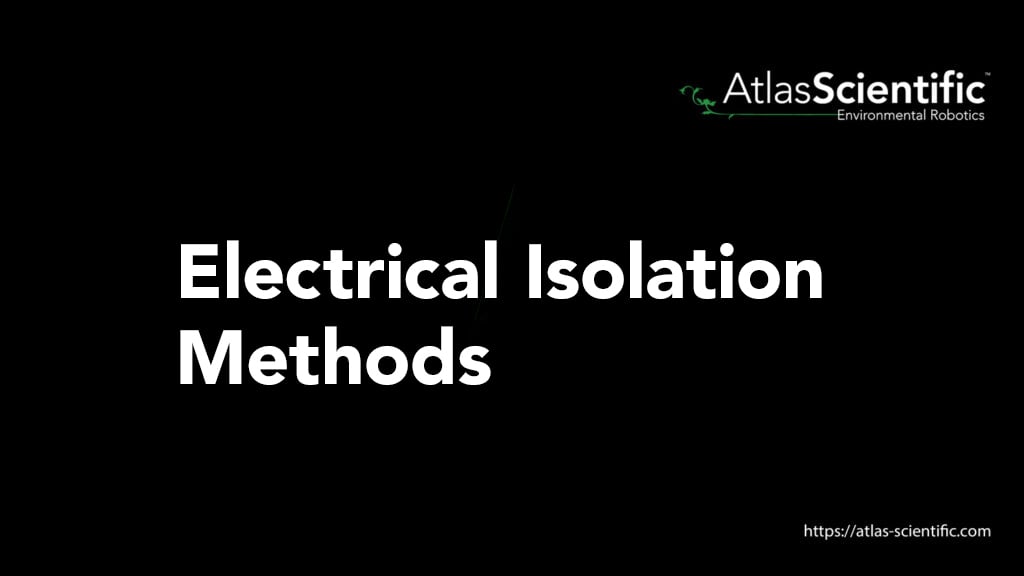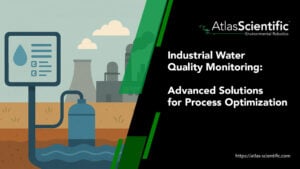

Everything You Need To Know About Sensor Housing
Sensors play a crucial role in collecting critical data in the world of scientific measurement and industrial monitoring systems. However, a sensor’s reliability and lifespan
# Type at least 1 character to search # Hit enter to search or ESC to close

No products in the cart.

No products in the cart.
Product Categories

Electrical isolation is needed to separate an electrical circuit, while still allowing the wanted signal to transmit through the circuit. Methods such as transformers, optical isolators, and capacitors are commonly used to prevent dangerous voltages from passing through to the user and to reduce electrical faults/failures.
Electrical isolation is the separation between two circuits that restricts the direct current (DC) and any unwanted alternating current (AC) in a power supply.
The isolation prevents dangerous voltages from passing to the operator in the event of an electrical fault/failure or during a surge from lightning. They are also important in preventing fire hazards, breaking ground loops, and eliminating transient noise in electrical systems.
Electrical isolation is also referred to as galvanic isolation, however, this is not to be confused with the electrochemical process, where metals corrode when they experience electrical contact with an electrolyte present.
Before we get into the different methods of electrical isolators, it is worth mentioning the different types. Electrical isolators are classified into four types:
Different electrical isolation methods are used to isolate a specific current (alternating current (AC)) and prevent direct (galvanic) flow currents, while still allowing the electrical signal to pass through the circuit. Below are the three common ways you can isolate an electrical signal.
The most common method of electrical (galvanic) isolation is a transformer. This electrical isolation method is also known as inductive coupling.
It uses a magnetic field flux, so the primary and secondary windings do not electrically connect and also, so no metal contact can happen. The transformer is made up of wires that overlap a ferromagnetic material, where signals are inductively coupled using the magnetic field.
Transformer Isolation Examples:
Transformers are used to isolate AC voltages and are used for safety by buffering or increasing/decreasing the voltage in a circuit. The secondary windings are offset from the primary, which breaks any ground loops between the two circuits.
However, as transformers use magnetic fields in the coiled wires, they can experience magnetic interference, therefore, unless they are properly shielded, inductive and radiated emissions can occur.
They are also fairly bulky compared to other electrical isolators, but, with advances in technology, there are now chip-scale transformers available.
Optical isolators (optocouplers) use varying light intensities to transmit information through an air gap with no DC path in an electrical circuit. The transmitter (usually an LED lighting fixture) sends light waves to a receiver (photo-transistor) which is photo-sensitive.
Optical isolators are split into two types:
Optical Isolator Examples:
The isolator is fixed in place using insulating plastic to prevent electrical conductivity; insulating plastic is completely resistant to the electrical current flow. Therefore, optical isolators are commonly used because of their resistance to electromagnetic interference and also electrical/magnetic noise.
Optical isolators usually have a higher power dissipation because they operate with a lighting fixture (transmitter) that produces heat, therefore they are susceptible to temperature effects. The transmitter also has a limited life span, as the LED lighting degrades over time, so it will need replacing.
Another downside to using an optical isolator is its running speed. Normally, they run at slower speeds than other electrical isolation methods.
Capacitors allow AC currents to flow through a circuit, while blocking the DC, so they are fantastic at coupling AC signals between electrical circuits at different DC voltages via their varying electric field. They have replaced optocouplers in electrical isolators over the past decade.
Capacitor Examples:
Capacitor methods are a common technology of digital isolators, plus there are many capacitive isolators available for different industries.
They are frequently used in modern devices to provide conduction paths for transient signals, which help ground the electrical circuit and prevent radiated emissions. Capacitive isolation is also much faster than optical isolation methods.
Capacitors are subject to failure when electrical voltages exceed their voltage rating. If you experience failure mode it can make the electrical circuit hazardous, therefore, it is important to always check the manufacturer guidelines.
Capacitive isolators are also irritating when you are using them to isolate digital signals.
Industrial applications now require higher demands, which puts pressure on manufacturers to add more features to isolation systems. Manufacturers are having to improve the performance of isolator systems without trying to raise equipment temperatures, and therefore specific safety measures must be followed.
An electrical isolation test is carried out before use to prevent electrical shocks or leakage accidents and confirm the manufacturer’s isolators’ safety specifications.
For safe isolation testing, it is important to measure the amount of DC leakage across current barriers. Usually, a set voltage of ~100V DC is tested across the isolation barrier.
High-Potential Test
A High-potential (HIPOT) test measures the electrical isolator’s barrier strength. This is common in everyday appliances, cables, wires, electric motors, and transformers.
It is the amount of leakage measured under the HIPOT test that gives you the isolation reading. The voltage applied is usually double the safety voltage, plus 1000V.
Isolation in electrical equipment separates two circuits, while still allowing the wanted signal to pass through the circuit.
Electrical isolation is important to prevent dangerous voltages which may cause failure or faults in electrical systems and electrocution to the user. The three main methods of electrical isolation are transformers, capacitors, and optocouplers.
If you have any questions regarding electrical isolation methods, or you are unsure which electrical isolator will suit your specific needs, please do not hesitate to contact our world-class team at Atlas Scientific.







Sensors play a crucial role in collecting critical data in the world of scientific measurement and industrial monitoring systems. However, a sensor’s reliability and lifespan

Advanced industrial water quality monitoring is critical for process optimization, regulatory compliance, and equipment protection, providing real-time insights, multi-parameter tracking, and system integration that save
Notifications